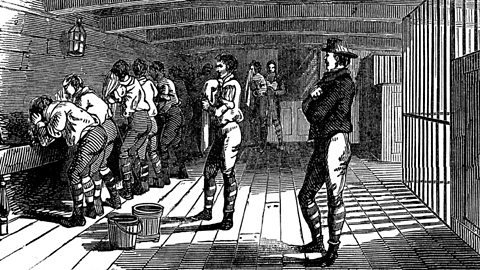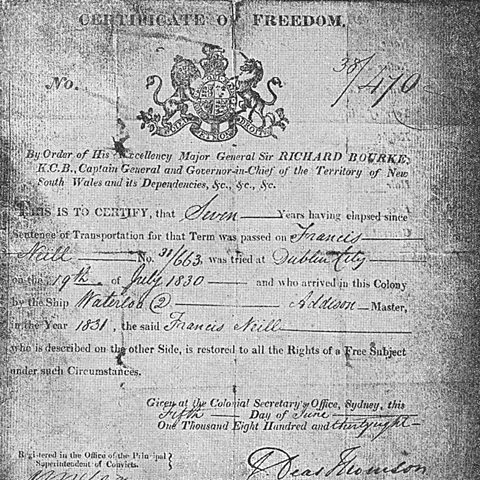The use of transportation from the 1770s to the 1860s
From 1654 some convicts were sent to the British colonies in America to work instead of being executed. This punishment became more common after the Transportation Act 1717. Convicts were sent to America until the outbreak of the wars of independence.
Transportation to Australia began in 1787, 17 years after Captain Cook's discovery of Australia. The first 11 ships left in May 1787 from Portsmouth with 736 convicts on board. 40 people died during the eight-month journey to Botany Bay.
Transportation was often a punishment given to people found guilty of theft вҖ“ 80 per cent of transported convicts were guilty of theft. Most were repeat offenders.
Transportation was also a punishment given to protesters. Some of the Luddites, Rebecca Rioters and the Tolpuddle Martyrs Protesters in the town of Tolpuddle in Dorset. They formed a trade union to protest about their low pay. Trade unions were illegal at the time and the leaders were transported for seven years. were transported. Only 15 per cent of transported convicts were women. Many judges used transportation as an alternative to the death penalty at the time of the Bloody Code. Sentences were for seven years, 14 years, or life.
Only 1.2 per cent of transported convicts were Welsh. Around 69 per cent were English, 25 per were Irish and 5 per cent were Scottish.
Examples of Welsh transportees
Lewis Lewis was one of the leaders of the Merthyr Rising. Like Dic Penderyn he was sentenced to death. However, his sentence was commuted to transportation and he was sent to New South Wales in 1832.
John Frost was one of the leaders of the Chartist movement in the Newport Rising. He was initially sentenced to death, but his sentence was later reduced to transportation.
Rebecca Riot leaders DaiвҖҷr Cantwr and Shoni Sguborfawr were also transported to Australia and sent to work in Tasmania.
Hulks

Convicts awaiting transportation were held in prison, known at the time as gaol, or on a hulkA disused warship that was used as a temporary prison. . They would then be transferred to a ship and the journey to Australia could take several months. The first ship took over eight months to reach Australia. Conditions on the journey were often cramped and some convicts died on the way. Convicts were often chained up by leg irons on board convict ships.
Once in Australia, some convicts were made to work building roads or breaking rocks. Many convicts were assigned to a free settler to work. For the well-behaved convicts, this life may not have been too bad.
Punishments were harsh and convicts were whipped if they disobeyed rules. Those who refused to follow the rules were sent to the more remote settlements to work in chain gangs.

For good behaviour, some convicts could secure early release after four years through a ticket-of-leave. Others were given a вҖҳconditional pardonвҖҷ and were then able to find paid work of their own for the remainder of their sentence.
However, many served the full time of their seven or 14-year sentence and received a certificate of freedom at the end.
Once free, many settled in Australia and did not return home. This was partly because few could afford to pay for the return journey. DaiвҖҷr Cantwr received his ticket of leave in April 1854, and was conditionally pardoned on 31 October of the same year. Shoni Sguborfawr was awarded a ticket-of-leave in 1856, and was conditionally pardoned in 1858.